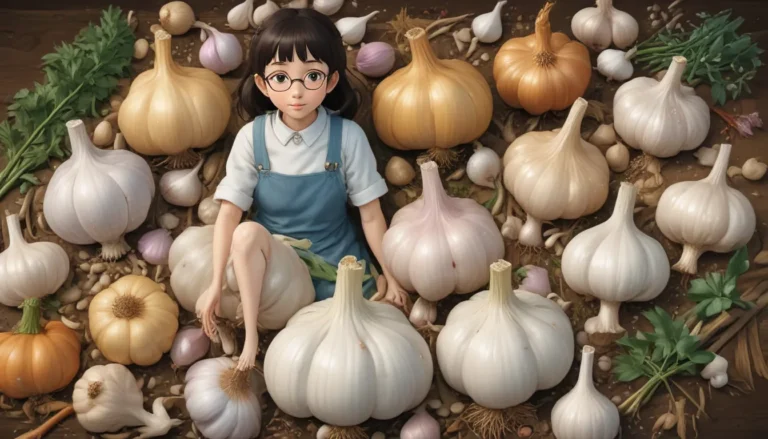Comprehensive Guide to Growing and Caring for Rose of Sharon

Are you looking to add a touch of beauty and elegance to your garden? If so, consider growing Rose of Sharon, also known as Hibiscus syriacus. This versatile plant, despite not being a rose, boasts stunning flowers in vibrant colors like purple, pink, white, red, and fuchsia. In this detailed guide, we’ll dive into everything you need to know about cultivating and maintaining this remarkable shrub.
What Is Rose of Sharon?
Rose of Sharon, also referred to as shrub althea, rose mallow, or hardy hibiscus, is a must-have addition to any garden. With its multi-stemmed structure and late-season blooming, this plant provides beauty when other perennials have passed their prime. Plus, it attracts essential pollinators like bees, butterflies, and hummingbirds. Fun fact: the young leaves of the plant are edible, making it a unique addition for food gardeners aiming to mix ornamentals with edibles.
Cultivation and History
Native to China and possibly other areas of East Asia, Rose of Sharon is highly regarded as the national flower of South Korea. Historically, this plant was used for both food and medicinal purposes. It was extracted as mu jin hua in traditional Chinese medicine, primarily for promoting longevity and treating various ailments like abdominal pain, diarrhea, and ringworm.
Rose of Sharon Propagation
Hibiscus syriacus is relatively easy to propagate through various methods such as seeds, branch layering, or stem cuttings. By taking cuttings or layering branches, you can ensure genetic clones of the parent plant. However, it’s essential to note that hybrid cultivars may not grow true to seed.
Transplanting
If you’re eager to propagate new plants, search for small seedlings near existing plants. Transplant these seedlings into pots filled with a soilless medium until they grow to a suitable size for outdoor planting.
From Cuttings
Another propagation option involves taking stem cuttings during the summer months. By following precise instructions, you can propagate new plants in a controlled environment like a greenhouse or indoors.
From Seed
Growing Rose of Sharon from seeds can introduce exciting variety to your garden, although plants grown from seed tend to be more vigorous. Harvest seeds from mature plants and start them indoors in preparation for outdoor planting.
How to Grow Rose of Sharon Flowers
To ensure healthy growth and vibrant blooms, Rose of Sharon thrives in full sun and well-draining soil. It can tolerate various soil types, from sandy to clay, and even pollution and salt. By applying a layer of mulch around the roots each spring, you can help retain soil moisture and regulate plant temperature effectively.
Growing Tips
- Plant in organically-rich, well-draining soil.
- Choose a full sun location for optimal growth.
- Mulch around the roots to retain moisture and regulate temperature.
- Consider protecting plants in colder climates during the winter.
- Ensure adequate shelter from cold winds in Zones 5 and 6.
Pruning and Maintenance
Pruning is essential for maintaining healthy Rose of Sharon plants. Whether you’re aiming to increase flower size or shape the plant into a tree-like form, pruning should be done in winter or early spring when the plant is dormant. By following proper pruning techniques, you can encourage robust growth and abundant blooms each season.
Rose of Sharon Cultivars to Select
With numerous cultivars available in the market, choosing the right Rose of Sharon variety for your garden can be an exciting feat. From Ardens with ruffled lavender blooms to White Pillar with upright growth, there’s a cultivar to suit every preference and landscaping need.
Managing Pests and Disease
Like any plant species, Rose of Sharon may face challenges from pests and diseases. By incorporating integrated pest management techniques and applying appropriate treatments, you can control common pests like aphids, Japanese beetles, and whiteflies, as well as fungal infections such as leaf spot, rust, and root rot.
Best Uses for Rose of Sharon Shrubs
Rose of Sharon offers a myriad of uses in the landscape, from border plantings to privacy screens and specimen plants. Its adaptability to various growing conditions and diverse cultivar selections make it a versatile addition to any garden setting.
Quick Reference Growing Guide
- Plant Type: Woody flowering shrub
- Flower / Foliage Color: Purple, pink, white, red, fuchsia, or combinations / medium to deep green
- Hardiness (USDA Zone): 5-9
- Bloom Time: Midsummer to fall
- Exposure: Full sun
- Spacing: 6-10 feet
- Height: 3-16 feet, depending on variety
- Spread: 2-10 feet, depending on variety
- Water Needs: Moderate
- Common Pests and Diseases: Aphids, Japanese beetles, whiteflies; leaf spot, root rot, rust
In conclusion, Rose of Sharon is a delightful shrub that can add charm and beauty to your garden. With its stunning blooms, easy propagation methods, and minimal maintenance requirements, it’s an excellent choice for gardeners of all skill levels. Whether you’re a seasoned horticulturalist or a beginner enthusiast, growing Rose of Sharon can be a rewarding experience that enhances the aesthetic appeal of your outdoor space. So, what are you waiting for? Plant a Rose of Sharon today and watch your garden bloom with elegance and grace!





